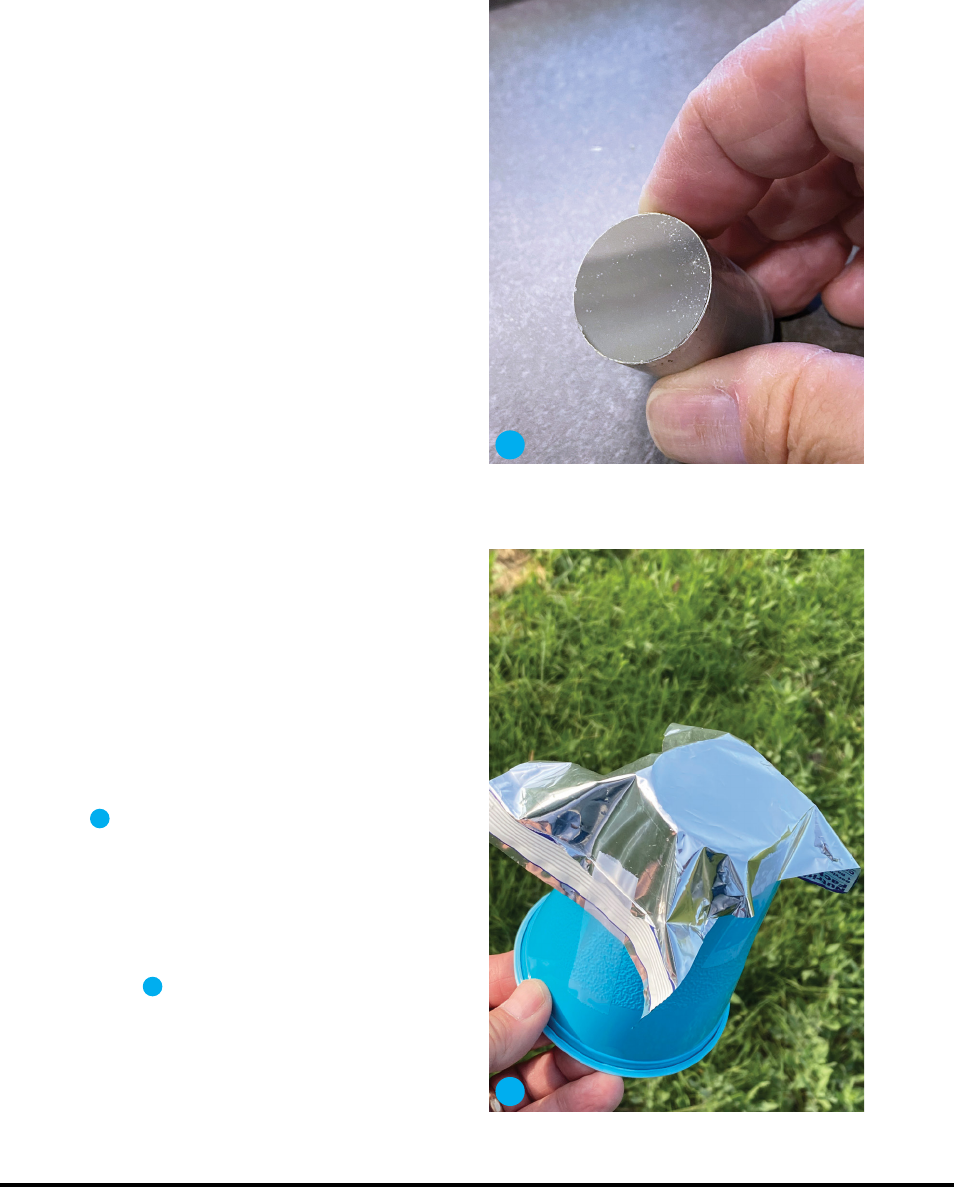
and his wife 100 years before our visit. We were
accompanied by representatives from National
Geographic, the Smithsonian Institution, and Bell
Laboratories. Our purpose was to recognize the
first time Bell transmitted the human voice over
a beam of sunlight by a photophone exactly a
century earlier.
To celebrate the photophone centennial, I built
a simple version of the device with which we sent
our voices across the site over beams of sunlight.
We then unwound a 100-foot length of optical
fiber to which I had attached a red LED at each
end, and we talked to one another with the red
LEDs serving as both emitters and detectors of
voice-modulated light.
Bell didn’t have LEDs or light-sensitive
photodiodes. Instead, he made his own light
detector from a cylindrical array of selenium
cells he cooked on a kitchen stove. When
mounted inside a reflector and connected to a
telephone receiver and a battery, this simple
arrangement formed a receiver capable of
detecting the human voice transmitted over a
beam of reflected sunlight.
AN ULTRA-SIMPLE PHOTOPHONE
Bell devised various ways to imprint voice on a
sunbeam, the simplest of which was simply a
thin mirror. When voice was directed against the
mirror, it vibrated in step with the sound waves.
The photophone transmitter I used during
the Photophone Centennial was an ultra-thin,
1" circular mirror cemented to one end of a
1"-diameter, 1¼"-long aluminum tube (Figure
F
). Ultra-thin mirrors are hard to find, so an
alternate will probably be required. Aluminum foil
(shiny side facing out) can be taped to one end of
a paper or plastic tube or cup — but the problem
with foil is wrinkle prevention.
Aluminized plastic, as from a snack wrapper
or a space blanket, is much easier to use.
Figure
G
shows a plastic cup with its bottom
removed and aluminized plastic taped over the
removed bottom.
For your photophone receiver, you can use the
circuit in Figure C or a Bluetooth speaker. For
best results, use a single, large-area silicon solar
cell (e.g., 2"×2" or 4"×4") for a detector. You want
to detect only modulated sunlight, so mount the
F
This photophone transmitter sent the author’s voice
over a beam of sunlight during a celebration of the
Photophone Centennial in 1980.
A simple photophone transmitter made from an
aluminized snack package and a plastic cup.
87
make.co
G
M78_084-88_AmSci_F1.indd 87M78_084-88_AmSci_F1.indd 87 7/13/21 12:25 PM7/13/21 12:25 PM
..................Content has been hidden....................
You can't read the all page of ebook, please click here login for view all page.
